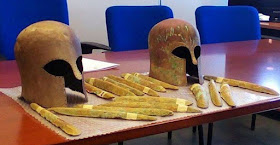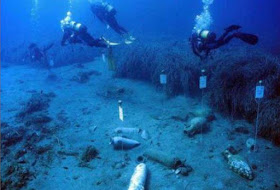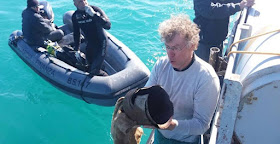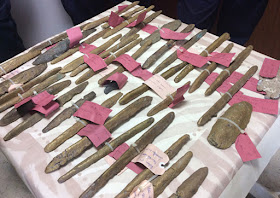 |
Nice enough as we have an excellent example of a shipment of both product and raw material That the copper had a high zinc content is a natural consequence of the source mine and should be expected for most everyday work I do not think that this is Orichalcum at all.
I had thought that orichalcum might be a copper gold combination that would allow chemical rubbing to produce a gold protective layer.
However the report that this particular metal had a natural red color changes my thinking on this. I suspect that we should see is native copper from Lake Superior could be worked up into a red colored metal. Take a look at this beauty. There is no alloying involved.
Ingots of orichalcum, Corinthian helmets and amphorae found off the coast of Sicily
47 ingots of orichalcum, two Corinthian helmets, archaic amphorae and a Massaliote round-bottom flask (ie., from the ancient Greek colony of Marseilles in France), have been recovered off the coast of Bulala, near the ancient Greek colony of Gela, in southern Sicily.
The finds are dated to between the end of the seventh century and the beginning of the sixth century BC.
 |
 |
 |
 |
The presence of wooden planking on the seabed near the bullion suggests these were part of the cargo carried by a ship arriving in Gela which was shipwrecked only a few metres from the coast.
Their discovery demonstrates the wealth of Gela in antiquity and the presence of rich and specialized craft workshops for the production of objects of great value.
Read more at https://archaeologynewsnetwork.blogspot.com/2017/02/ingots-of-orichalcum-corinthian-helmets.html#XTB5V9i8DrtSXqRe.99

No comments:
Post a Comment